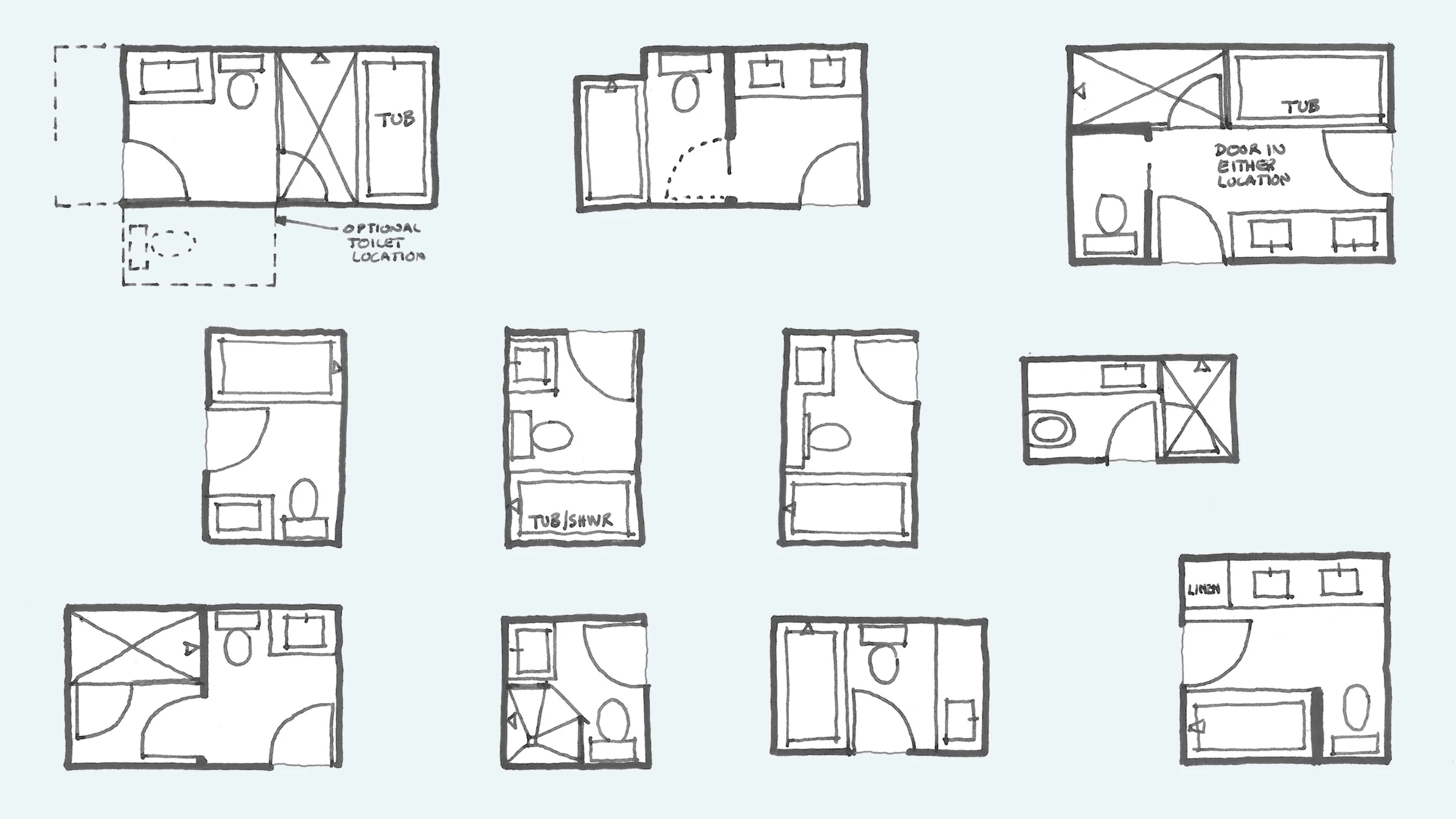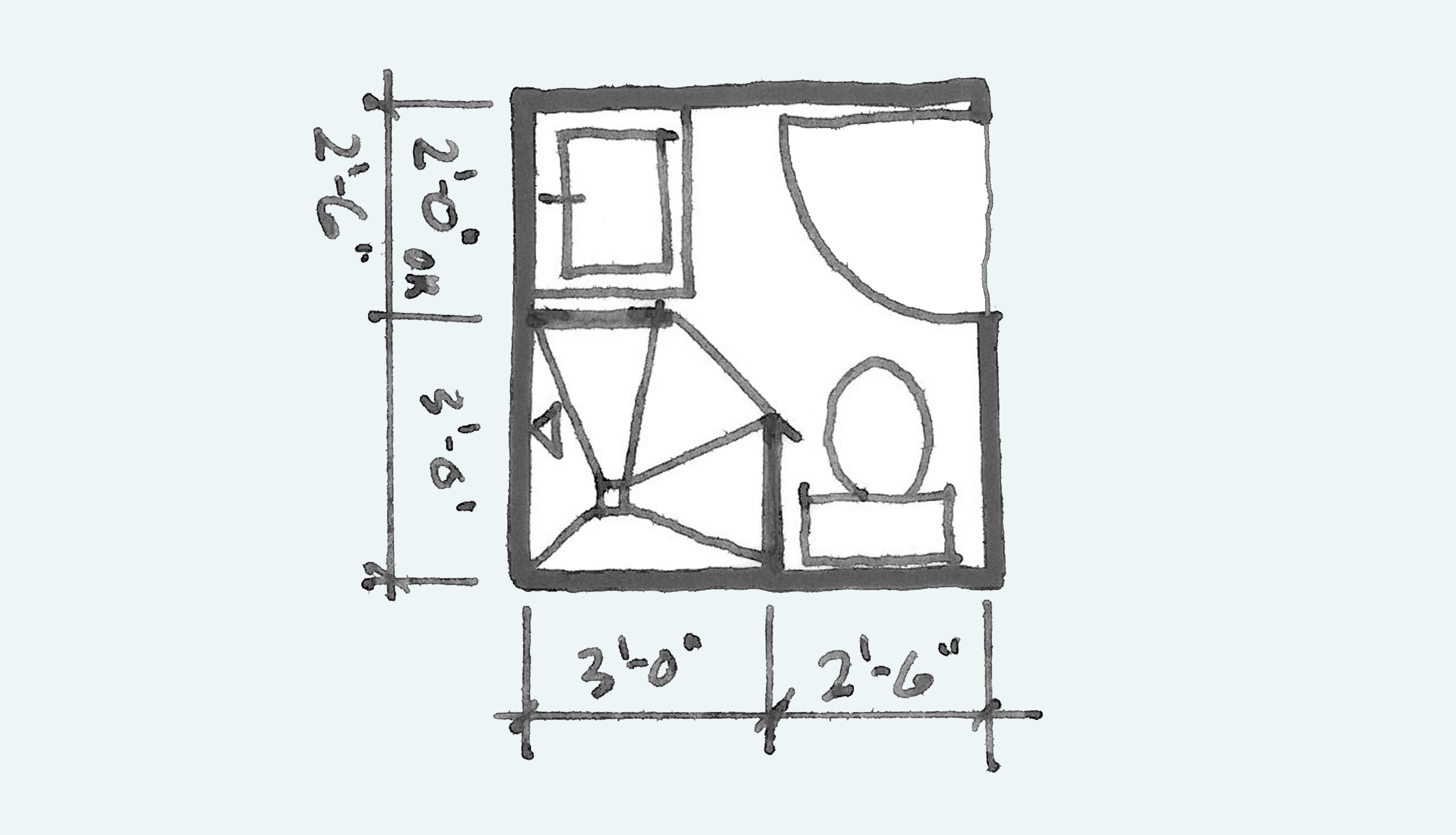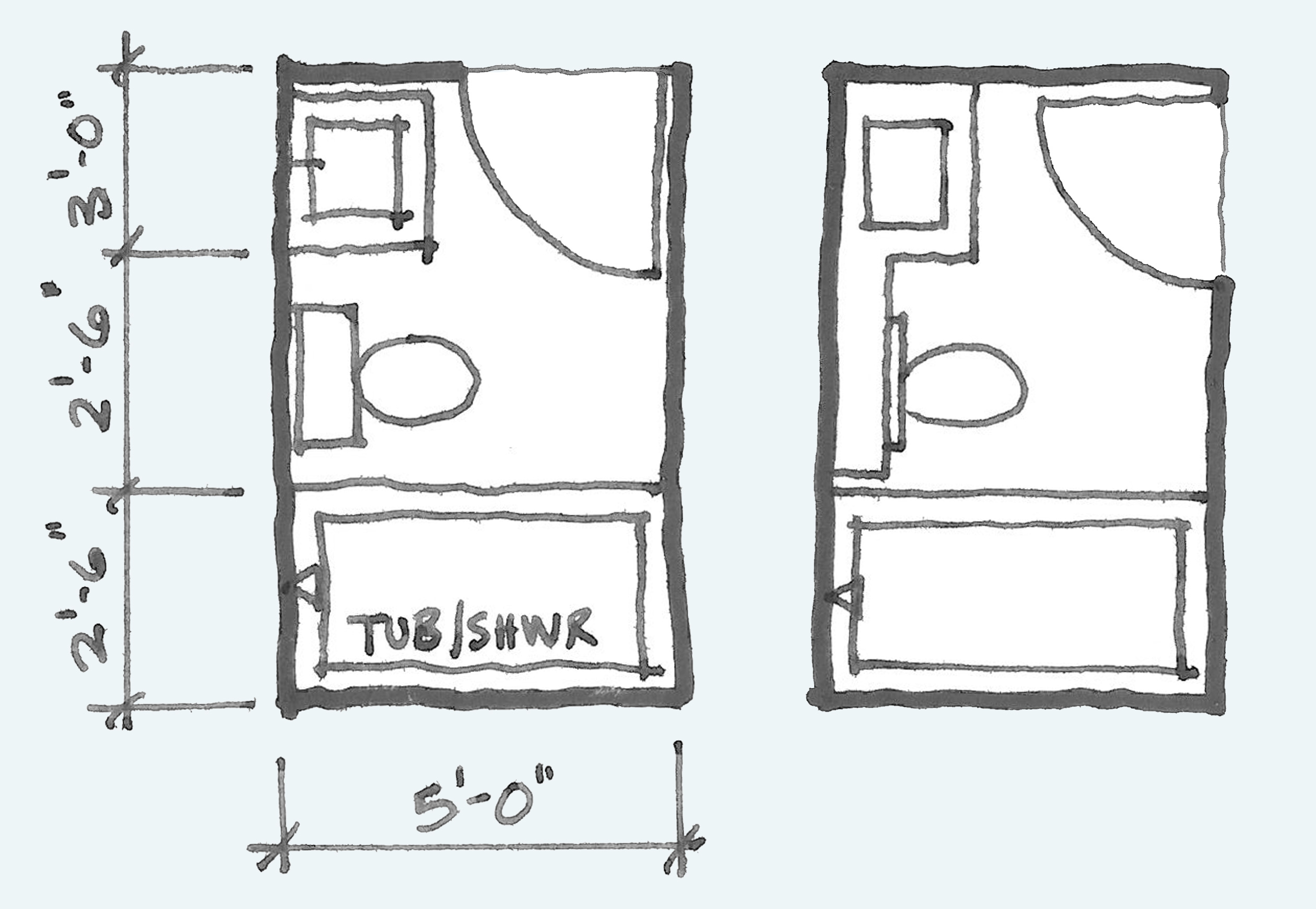Maximizing Space in a Small Attic Bathroom

Transforming a cramped attic into a functional and stylish bathroom is a rewarding challenge. The sloped ceilings and limited square footage can make it seem impossible, but with careful planning and smart design choices, you can create a bathroom that feels spacious and inviting.
Challenges of Designing a Small Attic Bathroom
Attic bathrooms often pose unique design challenges. The most common issues include:
- Limited Floor Space: The sloped ceilings and irregular shapes of attics can significantly reduce the usable floor area, making it difficult to accommodate all the necessary fixtures.
- Low Ceilings: The sloping roofline often results in low ceilings, which can make the space feel cramped and claustrophobic.
- Awkward Angles: The irregular shapes of attics can create awkward angles and corners, making it challenging to maximize space and create a cohesive design.
- Limited Natural Light: Attic bathrooms often lack windows or have small, poorly placed windows, making it difficult to bring in natural light.
- Ventilation Challenges: Attic bathrooms can be prone to moisture buildup and poor ventilation due to their enclosed nature and potential lack of direct access to the outside.
Maximizing Space in a Small Attic Bathroom
The key to designing a functional and comfortable small attic bathroom lies in maximizing space and creating a sense of openness. Here are some tips:
- Utilize Vertical Space: Maximize vertical space by incorporating tall cabinets, shelves, and mirrors. This helps to create a sense of spaciousness while keeping essential items organized and out of sight.
- Choose Compact Fixtures: Opt for compact toilets, vanities, and showers to save valuable floor space. Consider corner showers or wall-mounted toilets to maximize floor area.
- Use Light Colors: Light colors, such as white, cream, or pastels, can make a small space feel larger and brighter. They reflect light, creating a sense of openness and airiness.
- Embrace Minimalism: A minimalist design approach can help to create a sense of spaciousness. Avoid clutter and choose furniture and accessories with clean lines and simple shapes.
- Create Visual Flow: Use mirrors to reflect light and create a sense of depth, making the space feel larger. Consider a large mirror above the vanity or a smaller mirror on a side wall.
Creative Storage Solutions
- Wall-Mounted Storage: Wall-mounted shelves, cabinets, and towel racks are excellent space-saving solutions for small attic bathrooms. They keep items off the floor, freeing up valuable floor space.
- Under-Sink Storage: Maximize under-sink storage with pull-out drawers or tiered shelves. This allows you to store toiletries, cleaning supplies, and other bathroom essentials out of sight.
- Over-the-Toilet Storage: Utilize the space above the toilet with a narrow shelf or cabinet to store towels, extra toiletries, or decorative items.
- Recessed Niches: If the attic structure allows, create recessed niches in the walls for storing toiletries, towels, or decorative items.
Small Attic Bathroom Floor Plan
A small attic bathroom can be efficiently designed to include a shower, toilet, and vanity. Here is a possible floor plan:
- Shower: Place the shower in a corner to maximize floor space. Consider a walk-in shower or a small shower stall with a sliding door.
- Toilet: Position the toilet adjacent to the shower, creating a compact wet area. A wall-mounted toilet can further optimize space.
- Vanity: Place the vanity opposite the shower and toilet, allowing for easy access. A floating vanity can create a sense of openness and maximize floor space.
Natural Light and Ventilation
Natural light and proper ventilation are crucial in any bathroom, especially in a small attic bathroom.
- Skylights: If possible, install a skylight to bring in natural light. Skylights can also help to improve ventilation by allowing warm air to escape.
- Windows: If the attic has windows, ensure they are properly sized and positioned to allow for adequate natural light and ventilation.
- Exhaust Fan: Install a powerful exhaust fan to remove moisture and odors. This is essential for preventing mold and mildew growth.
Recommended Materials and Finishes, Small attic bathroom floor plans
- Waterproof Flooring: Choose waterproof flooring options such as tile, vinyl, or laminate. These materials are easy to clean and resist moisture damage.
- Moisture-Resistant Walls: Use moisture-resistant drywall or tile for the walls. This helps to prevent moisture damage and mold growth.
- Light-Colored Walls: Light-colored walls will reflect light and create a sense of spaciousness.
- Durable Fixtures: Choose durable and easy-to-clean fixtures for the shower, toilet, and vanity.
Essential Features for a Small Attic Bathroom: Small Attic Bathroom Floor Plans

A small attic bathroom can still be a functional and stylish space, as long as you carefully consider the essential features. While space is limited, you can create a comfortable and practical bathroom that meets your needs.
Types of Showers for Small Spaces
Choosing the right shower for a small attic bathroom is crucial. Here are some options to consider:
- Walk-in Showers: These showers eliminate the need for a shower door, maximizing space and creating a more open feel. They are also ideal for accessibility, as they allow easy entry and exit.
- Corner Showers: Utilizing a corner space, these showers are compact and efficient. They often feature a curved or angled design, allowing for a more spacious feel despite their small footprint.
- Curbless Showers: These showers eliminate the lip or threshold, creating a seamless transition between the bathroom floor and the shower area. This is particularly beneficial for accessibility and can make the space feel larger.
Types of Toilets for Small Spaces
Space-saving toilets are essential for small attic bathrooms. Consider these options:
- Wall-Hung Toilets: These toilets are mounted on the wall, leaving the floor clear. This creates a more spacious and airy feel, and the wall-mounted tank eliminates the need for a traditional toilet tank.
- Compact Toilets: These toilets are designed with a smaller footprint than standard toilets, making them perfect for small spaces. They often have a shorter bowl and a narrower base, maximizing available floor space.
Types of Sinks for Small Spaces
Sinks are an essential part of any bathroom, and choosing the right one for a small attic bathroom is crucial. Here are some options to consider:
- Pedestal Sinks: These sinks are mounted on a pedestal, leaving the floor space underneath open. This creates a more spacious and airy feel, and the pedestal provides a sleek and elegant look.
- Wall-Mounted Sinks: Similar to wall-hung toilets, wall-mounted sinks are mounted on the wall, freeing up valuable floor space. They are available in various sizes and styles, allowing you to choose the perfect fit for your bathroom.
- Corner Sinks: These sinks are designed to fit into a corner space, maximizing the available area. They are often smaller than standard sinks, but they still offer ample space for washing hands and brushing teeth.
Ventilation and Lighting
Proper ventilation and lighting are crucial for any bathroom, especially a small attic bathroom.
- Ventilation: A well-ventilated bathroom prevents moisture buildup, which can lead to mold and mildew growth. An exhaust fan is essential, and consider a window for natural ventilation.
- Lighting: Good lighting is essential for a functional and aesthetically pleasing bathroom. Consider a combination of overhead lighting and task lighting, such as vanity lights, to illuminate specific areas.
Choosing the Right Fixtures and Fittings
When selecting fixtures and fittings for a small attic bathroom, consider these tips:
- Space-Saving Design: Opt for fixtures and fittings that are designed for small spaces, such as compact faucets, towel bars, and toilet paper holders.
- Multi-Functional Fixtures: Look for fixtures that serve multiple purposes, such as a showerhead that also functions as a hand shower or a vanity mirror with built-in lighting.
- Light Colors: Light colors can make a small space feel larger. Choose light-colored tiles, fixtures, and accessories to create a sense of spaciousness.
Safety Features
Safety is paramount in any bathroom, but it’s especially important in a small attic bathroom.
- Non-Slip Flooring: Choose flooring materials that are non-slip, such as tile or rubber mats. This can help prevent accidents, especially when the floor is wet.
- Grab Bars: Install grab bars near the shower, toilet, and sink for added support and stability. This is especially important for older adults or people with mobility issues.
- Adequate Lighting: Ensure the bathroom is well-lit to prevent falls and other accidents.
Plumbing and Electrical Challenges
Installing plumbing and electrical in an attic bathroom can present unique challenges:
- Access: Reaching the pipes and wires in an attic can be difficult, especially if the space is cramped.
- Slope: The slope of the roof can make it challenging to install plumbing and electrical fixtures.
- Ventilation: Ensure adequate ventilation to prevent moisture buildup and condensation in the attic.
Inspirational Design Ideas for Small Attic Bathrooms

Transforming a small attic bathroom into a haven of style and functionality is a delightful challenge. With a little creativity and strategic planning, you can create a space that’s both visually appealing and practical.
Maximizing Space and Style
Small attic bathrooms often have unique architectural features that can be incorporated into the design. Sloped ceilings, for instance, can be turned into a focal point by using contrasting colors or adding decorative elements like beams. The use of light colors on the walls and ceilings creates an illusion of spaciousness. This approach allows the room to feel airy and expansive, maximizing the limited space.
Using Color, Lighting, and Materials
The strategic use of color plays a significant role in creating a visually appealing and functional space. Lighter colors, like whites, creams, and pastels, reflect light and make the room appear larger. Bold accents of color can be introduced through towels, rugs, or artwork to add personality. Natural light is a valuable asset in any bathroom. If your attic bathroom has a window, take advantage of it. Installing a skylight is another option to maximize natural light. Mirrors are an effective way to create the illusion of more space by reflecting light and making the room appear larger.
Popular Bathroom Design Styles
- Modern: Clean lines, minimalist fixtures, and a neutral color palette characterize modern bathroom design. Sleek cabinetry, chrome finishes, and large-format tiles are common elements.
- Farmhouse: Farmhouse style bathrooms are known for their rustic charm. Warm wood tones, distressed finishes, and natural materials like stone are often incorporated. Think exposed beams, farmhouse sinks, and vintage-inspired lighting.
- Minimalist: Minimalist bathroom design emphasizes simplicity and functionality. It features a streamlined aesthetic with clean lines, a limited color palette, and minimal clutter.
Incorporating Natural Elements
Bringing the outdoors in can enhance the ambiance of a small attic bathroom. Natural materials like wood and stone create a sense of warmth and tranquility. Wood can be used for flooring, cabinetry, or accents like a decorative shelf. Stone can be used for the shower floor or backsplash.
Using Mirrors and Reflective Surfaces
Mirrors are essential in a small bathroom as they reflect light and make the room feel larger. Strategically placed mirrors can also enhance the natural light in the space. Other reflective surfaces, such as glass shower doors or chrome fixtures, can also help to create a sense of spaciousness.
Creating a Spa-like Atmosphere
Transforming your attic bathroom into a spa-like sanctuary is a fantastic way to enhance your well-being. Soft lighting, calming colors, and natural elements can all contribute to a serene and relaxing atmosphere. A luxurious showerhead and aromatherapy candles can also add to the spa experience.
